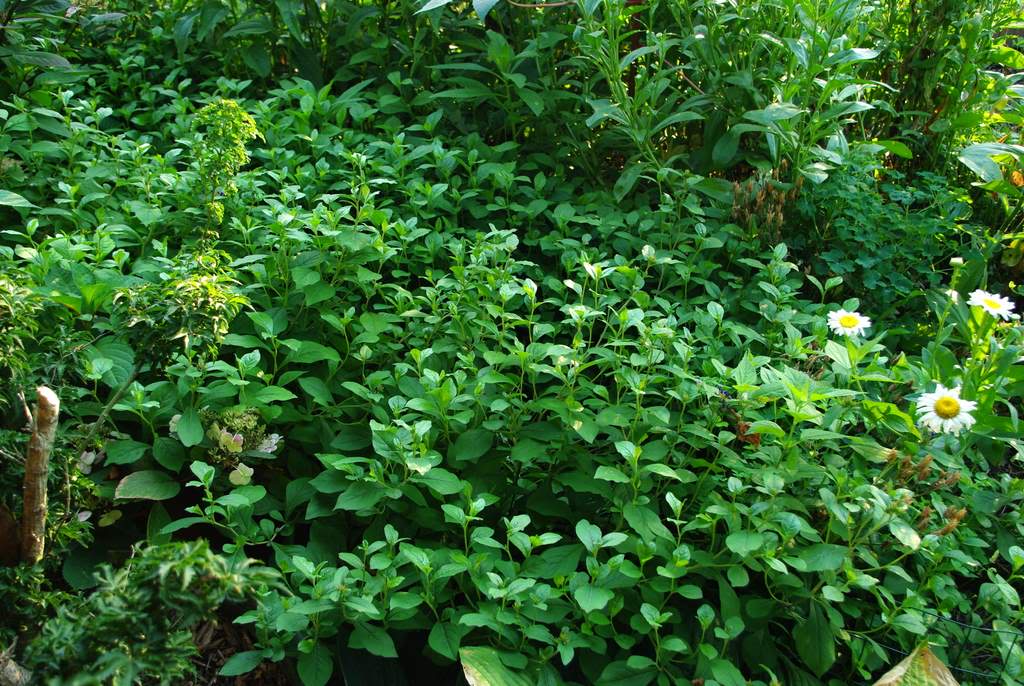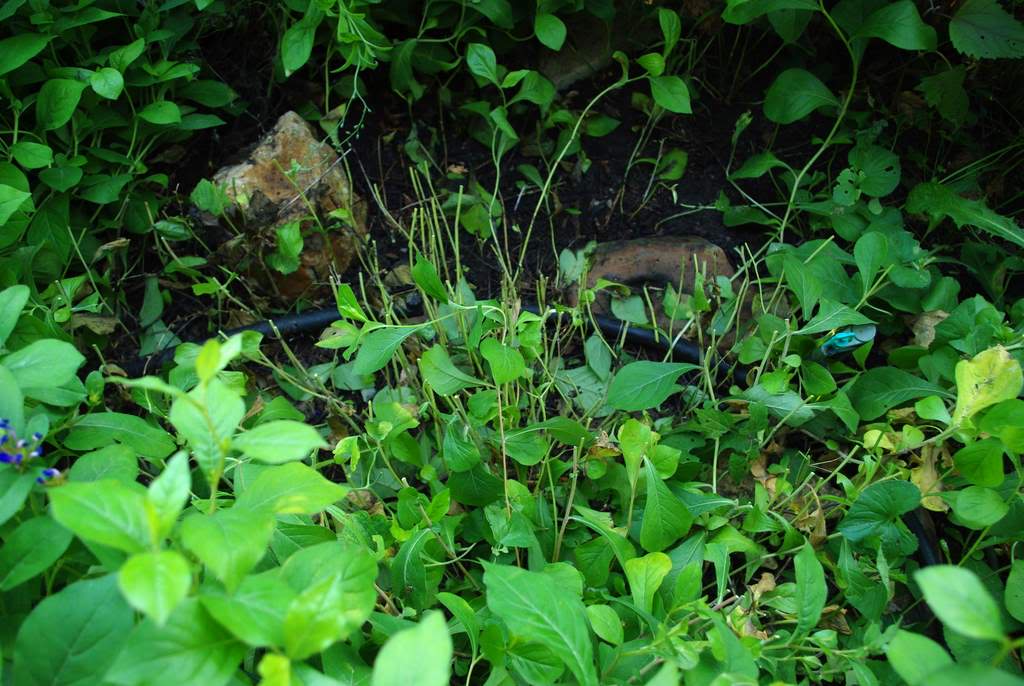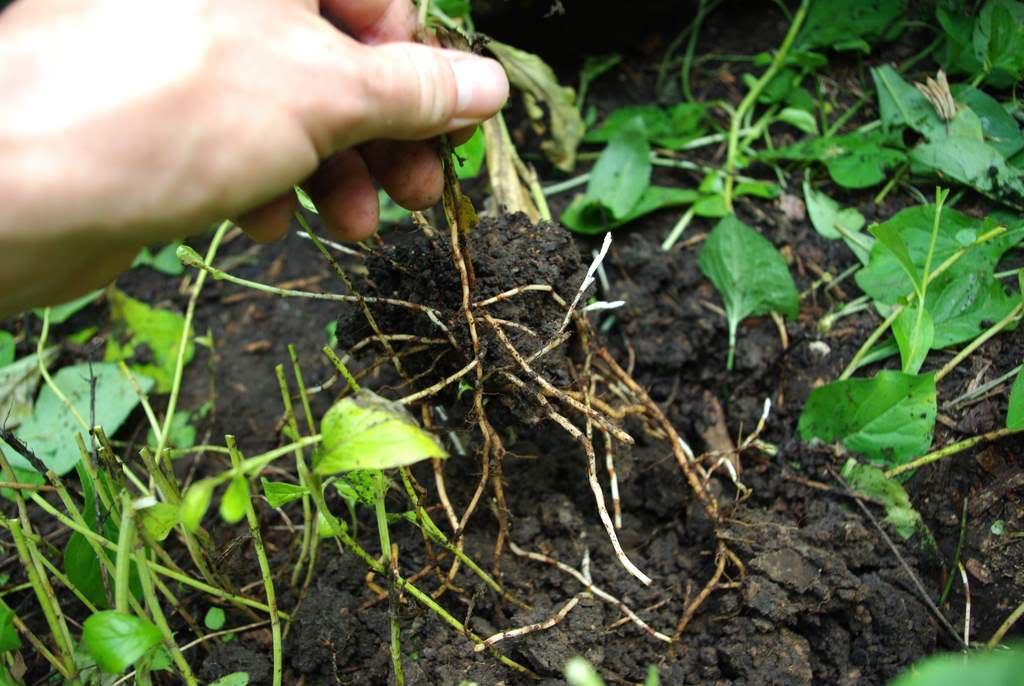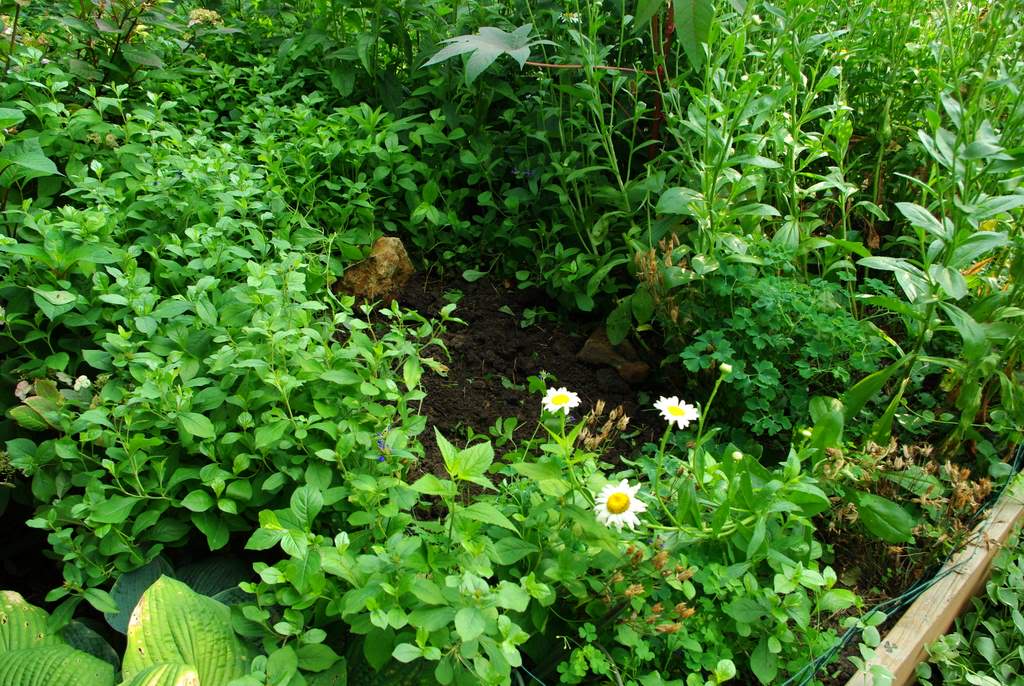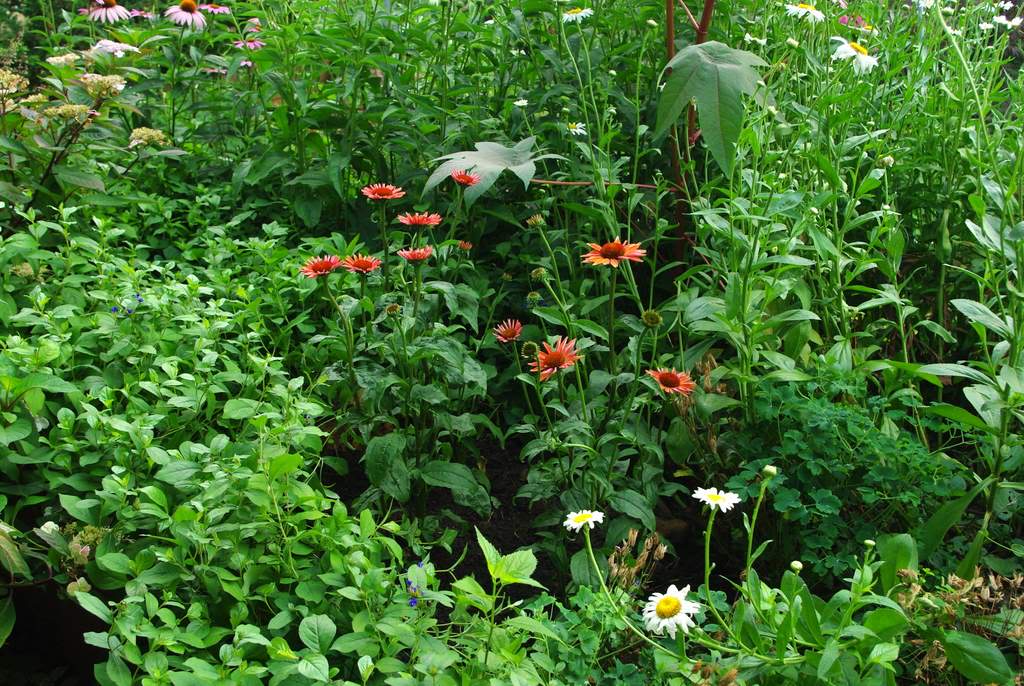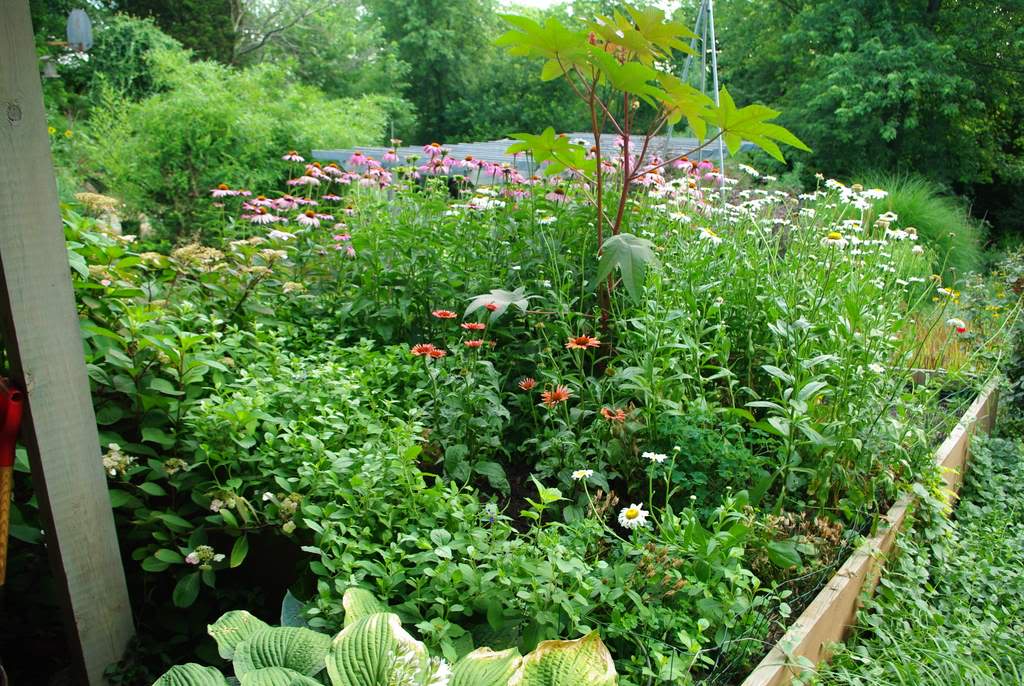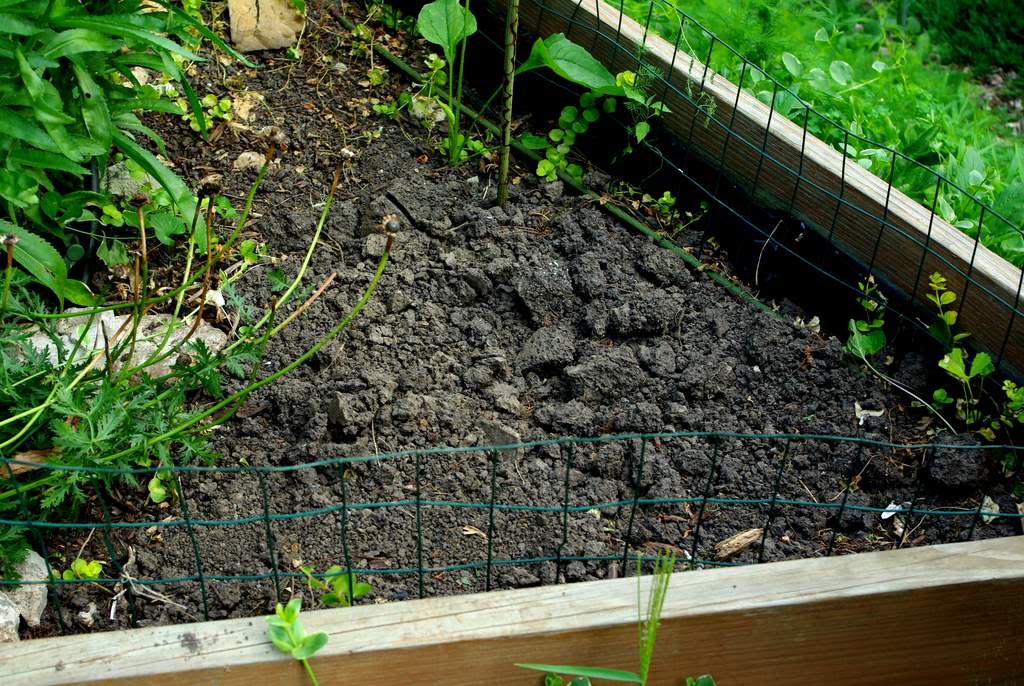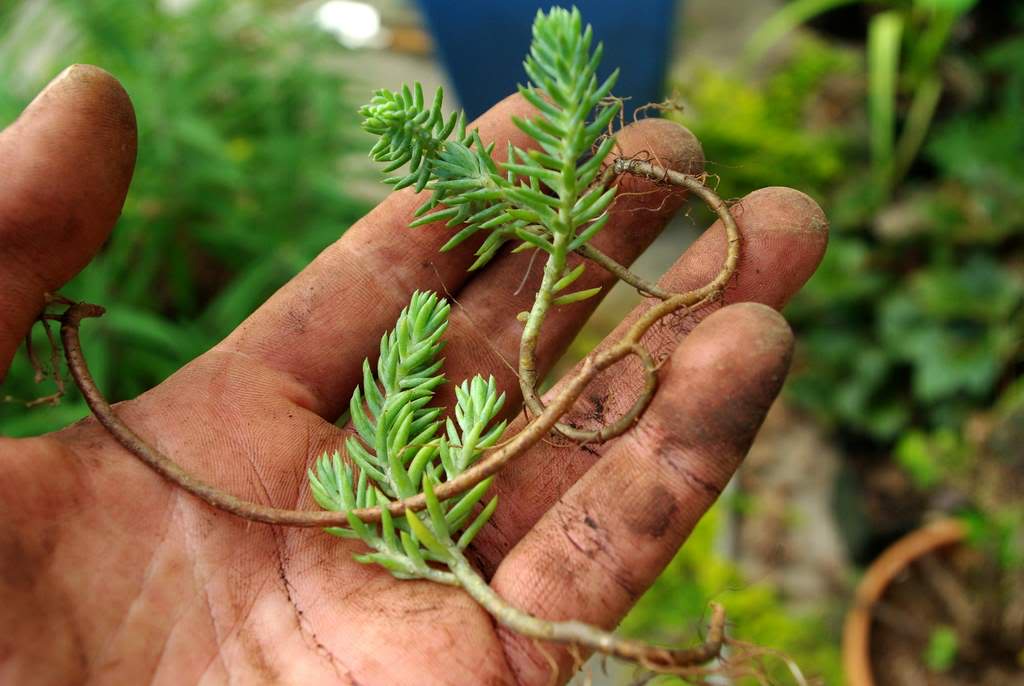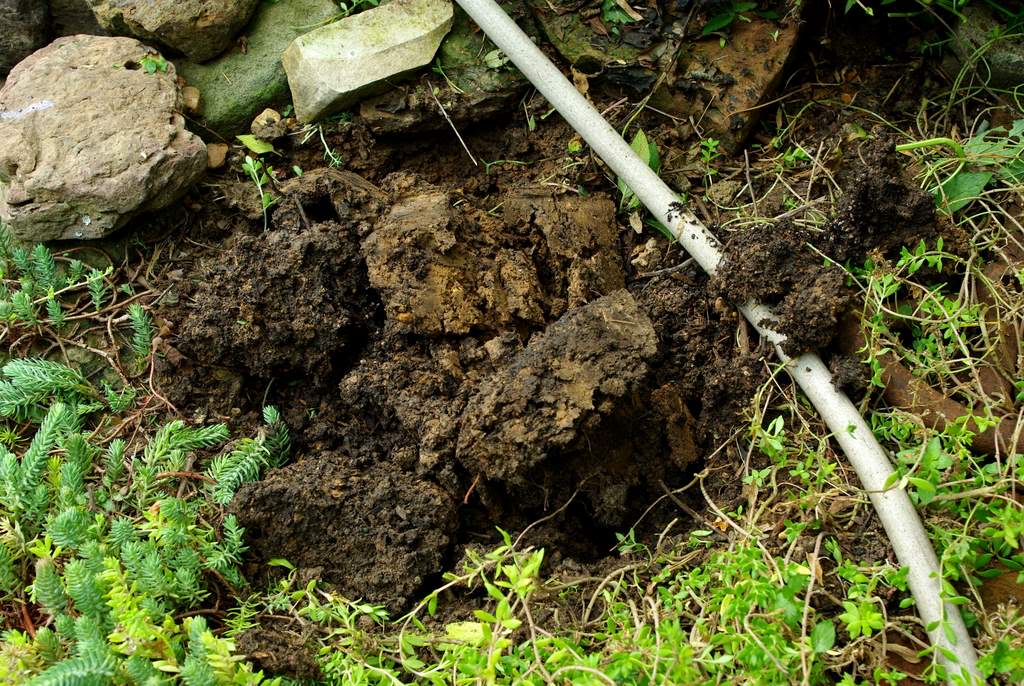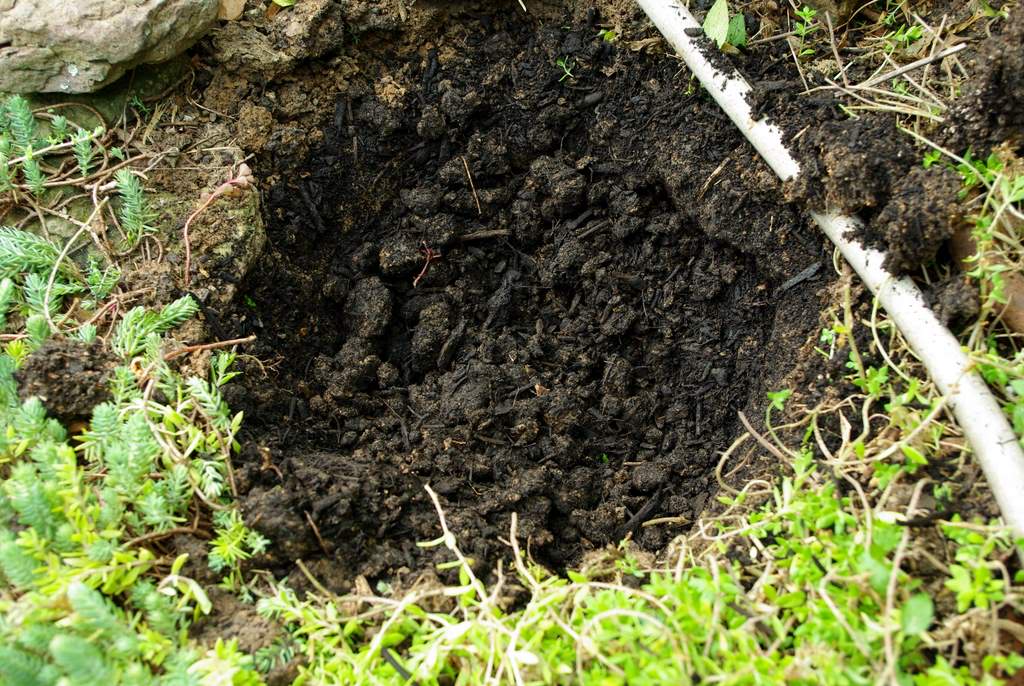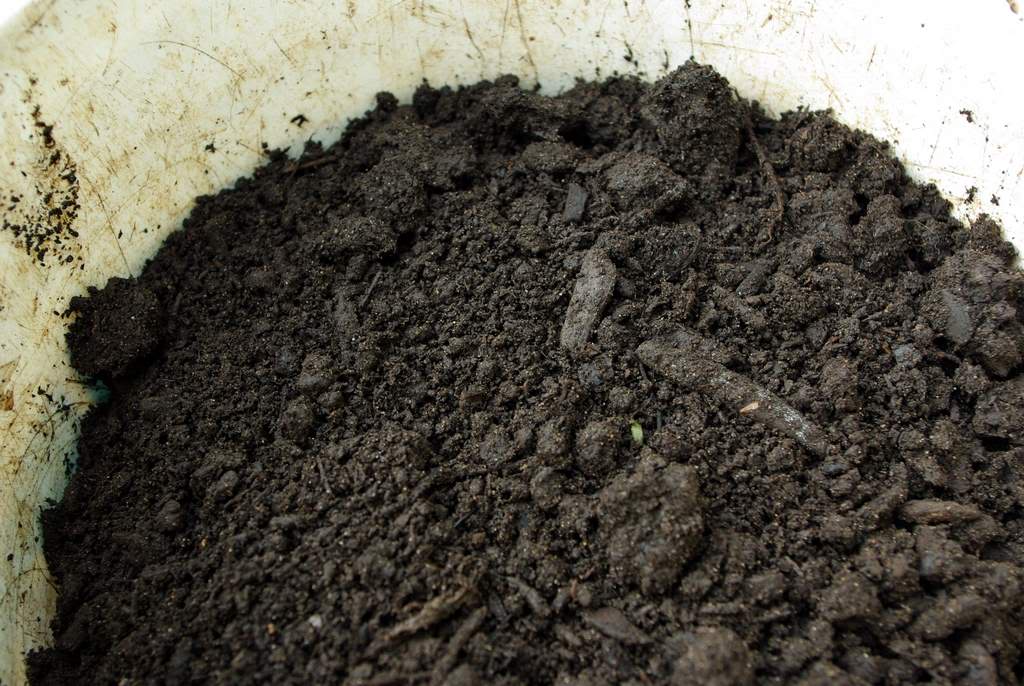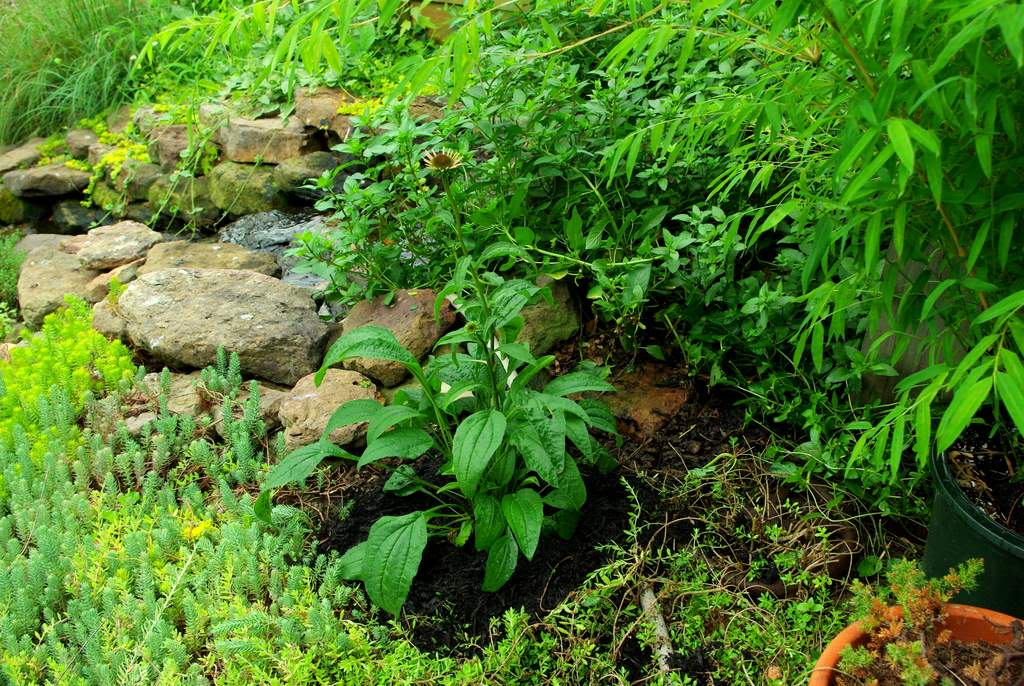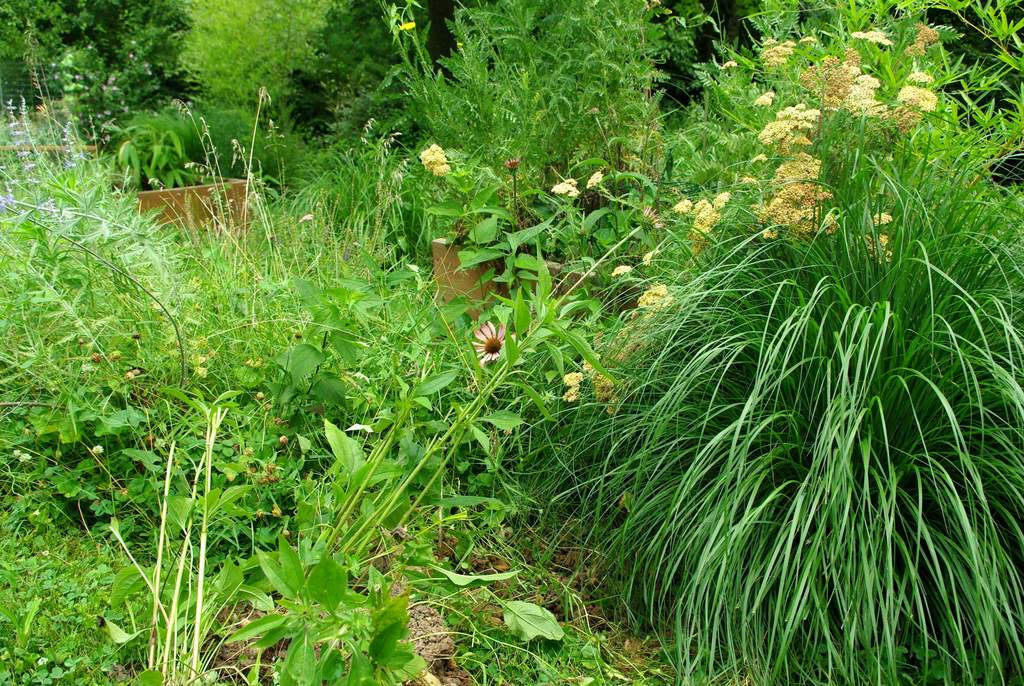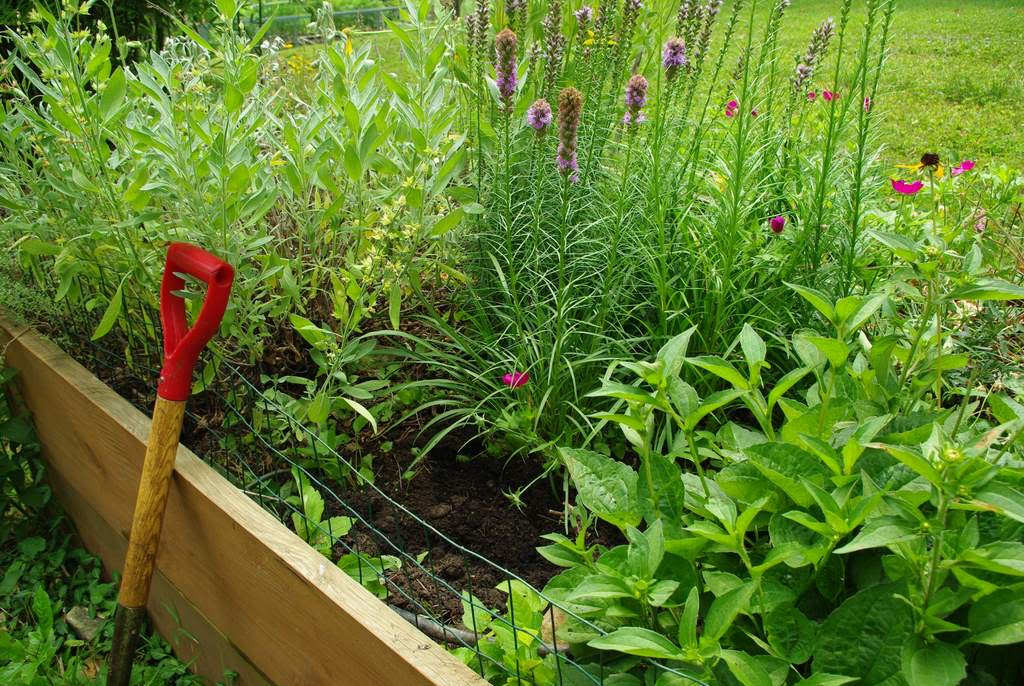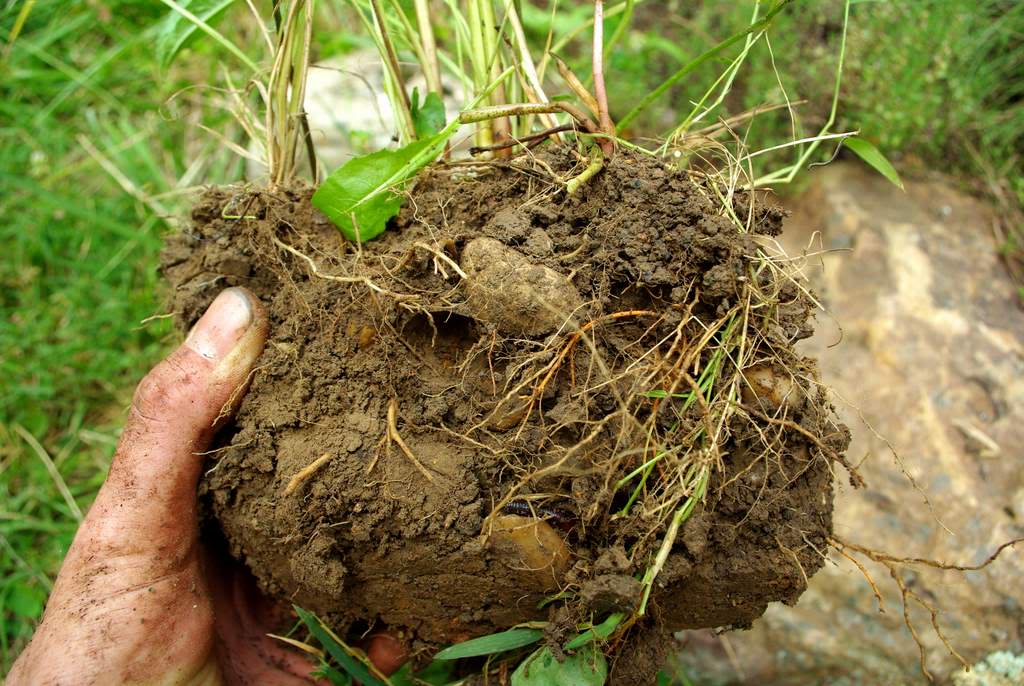New coneflowers get planted
>> Wednesday, June 30, 2010 –
coneflowers,
planting,
transplant
I've decided what to do with the new coneflowers I bought the other day: they're going in my coneflower bed. (That certainly took a lot of careful planning and consideration, didn't it?)
The first three are going in a part that's overgrown by plumbago, so there's some prep work to be done -- it's not just "dig a hole and stick the new plants in".
Since this is such a mass of plumbago, we'll have to clear some space...
First step is to grab a handful and cut it back.
Then start digging. I hope this isn't one of those plants where every broken piece of root grows into a new plant.
If it is, I'm in trouble here. A bit of root removal and we're almost ready:
Just need to add some compost before planting. I read once that the secret to a healthy garden is to add compost to the soil whenever you dig a hole. So that's what I do.
Plants are in, and although they look kind of overwhelmed by the rest of the plants here, they look quite good from the deck up above.
I didn't think to take a photo from that vantage point though... I'm sure I will later in the summer once they fill in more.
Next up is the corner of that same bed (at the far right edge of the above photo) which I cleared the other day when I removed eryngium and weeds:
A couple of other coneflowers are going in here, as well as a 'Zagreb' Coreopsis -- a plant I've always thought about getting but never did. Thank you 1/2 price perennial sale!
I think it looks great, and will look even better when it fills in more.
I've got one more new coneflower variety, and I think it will work really well next to the stream, with the coneflower bed in the background:
This area has some mint creeping into it, and there are a couple of different groundcover sedums here. I'll remove some of the mint and sedum:
I'll plant this 'Blue Spruce' sedum in pots. Pretty much every scrap of sedum will root with very little effort, so I'll have some more plants in a couple of months.
The soil here is very heavy clay, and somewhat wet. I wonder if the stream has a leak up here?
I'll remove a good portion of soil from the hole, then add a lot of compost to what's left:
It's still pretty heavy -- I don't really want to plant in it alone, so cheap, bagged topsoil to the rescue:
I keep bags of this stuff around for times like this. I need something that is dry and pretty fine-textured to mix with compost and use to fill in around the plant.
Here's the finished planting:
Again, looks great but will look even better once it fills in more and some of the flowers open up.
I've got one more coneflower-related project, and that's to relocate some that are in the main deer highway. I'll take them from the area where they get heavily chomped:
And put them here in a more protected spot:
Besides getting less deer traffic, this new location is right below the kitchen window, so I'll see it a lot more often than that bed way in the back of the yard.
One mistake I made several years ago was mulching this bed with river rock. The rocks eventually mixed in with the soil a few inches deep:
This makes it extremely difficult to dig here. See the rocks at the bottom of that clump? They worked down that deep from rain and moles. I will never put rocks down on soil again -- a liner of some sort is essential!
Ok, so here's one of the plants in its new home:
Looks much better, and much easier for me to see than in its old location! (I know it's hard to see since the blooms are not yet completely open.)
So that's the end of my coneflower planting for a while. There are still some plants left back there in that same bed that I can relocate, but right now I don't have any ideas of where to put them. Plus I'm exhausted. I'll do more digging on a cooler day, but I'm done for today!

